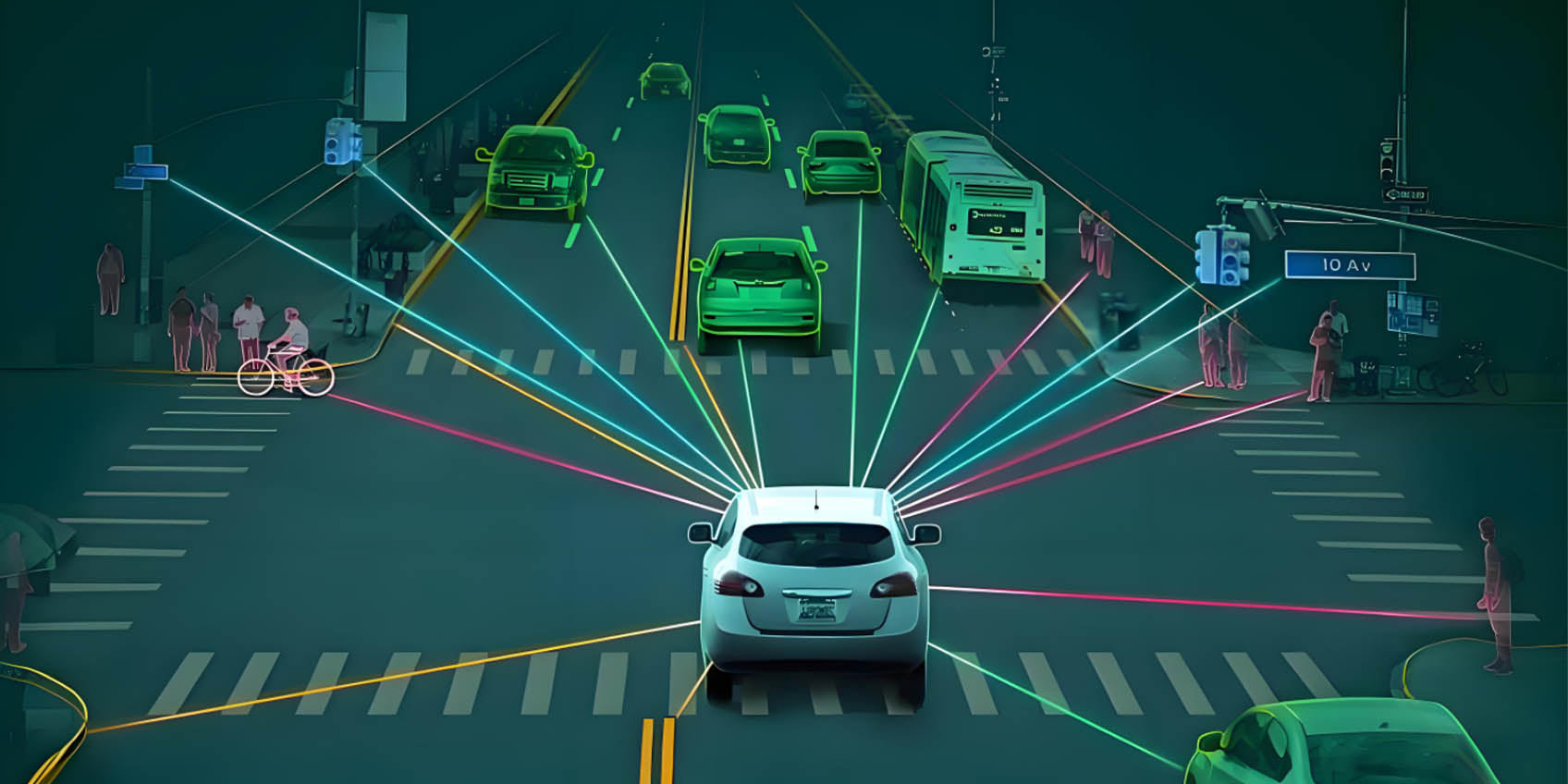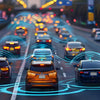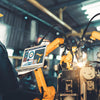AI-Powered Sensors: Core Technology for Smart Perception & Automation

AI-Powered Sensors: Enhancing the Perception Ability of Smart Devices
With the development of Artificial Intelligence (AI), Machine Learning (ML), and Internet of Things (IoT), AI-powered sensors are becoming an essential component of modern smart systems. These sensors integrate advanced perception technologies with AI algorithms, enabling devices to collect and analyze data with higher precision, speed, and intelligence. As a result, they facilitate smarter operations and decision-making across various industries, including manufacturing, healthcare, automation, security, and agriculture.
By combining deep learning, computer vision, and sound recognition technologies, AI-powered sensors allow devices to understand, predict, and respond to environmental changes swiftly, enhancing automation levels and optimizing operational efficiency. This article will explore the applications and development prospects of AI-powered sensors in various industries.
What is an AI-powered sensor?
An AI-powered sensor is an advanced sensor that incorporates AI algorithms, enhancing its ability to detect, interpret, and respond to environmental stimuli. These sensors process data locally (at the device level) and make decisions in real-time, rather than just collecting and transmitting raw data. Leveraging Machine Learning and Deep Learning technologies, AI-powered sensors can analyze complex patterns, recognize objects, predict outcomes, and adapt to ever-changing environmental conditions without continuous human input.
AI-powered sensors are widely used in several fields, including:
- Automation and Manufacturing: AI-powered sensors help monitor equipment health, optimize production lines, and detect faults before they occur.
- Smart Homes: These sensors enable devices like smart thermostats, lighting, and security cameras to learn and adapt to user behavior, improving comfort and safety.
- Healthcare: AI sensors monitor vital signs and health conditions in real-time, providing doctors with data analysis and early alerts for patients.
- Autonomous Vehicles: AI sensors (e.g., cameras, radar, and LiDAR systems) detect objects, create environmental maps, and navigate safely.
- Environmental Monitoring: AI-powered sensors track air quality, water quality, and other environmental factors to ensure public health and safety.
By combining AI with sensor technology, these devices provide higher levels of intelligence, precision, and efficiency than traditional sensors.

Core Technologies of AI-Powered Sensors
1. Deep Learning and Data Analytics
AI-powered sensors typically integrate deep learning and data analytics technologies, enabling them to automatically identify patterns, detect anomalies, and make intelligent decisions through the analysis of massive datasets. For example, AI sensors can automatically adjust their operational parameters to adapt to real-time environmental changes by learning from various environmental data, thus improving efficiency and accuracy.
In the smart home sector, AI sensors can automatically adjust air conditioners and lighting based on changes in temperature, humidity, and lighting, balancing energy efficiency and comfort.
2. Computer Vision and Image Recognition
Computer vision is a core component of AI-powered sensors, especially in scenarios where real-time analysis and processing of image or video data are needed. With high-precision cameras and AI algorithms, computer vision can assist devices in performing object recognition, object tracking, facial recognition, and other tasks.
For example, in smart security systems, AI-powered sensors analyze surveillance video, automatically identifying intruders or suspicious activities and triggering alarms, greatly enhancing security capabilities.
3. Sensor Fusion
AI-powered sensors rely not only on a single type of sensor but also on the fusion of multiple sensors (such as temperature sensors, humidity sensors, infrared sensors, and light sensors) to provide more comprehensive and accurate data. For example, in autonomous driving, AI sensors fuse data from LiDAR, radar, and cameras to analyze the surrounding environment in real-time, providing high-precision perception capabilities and ensuring driving safety.
Sensor fusion technology improves precision while reducing the errors that can arise from relying on a single sensor, ensuring data reliability.

Application Fields of AI-Powered Sensors
1. Smart Manufacturing and Automation
In smart manufacturing, AI-powered sensors are widely used for quality inspection, production monitoring, and equipment maintenance, helping companies improve productivity and ensure product quality. For example:
- Health Monitoring: By integrating AI-powered sensors, devices on the production line can monitor their operational status in real-time, predict potential failures, reduce downtime, and enhance equipment reliability and maintenance efficiency.
- Automated Inspection: AI sensors can detect product quality in real-time, identify defects, and provide feedback. For example, on electronics production lines, AI sensors using visual recognition systems can inspect the quality of soldering on circuit boards, ensuring that every detail meets standards.
2. Smart Homes and IoT
AI-powered sensors play a crucial role in smart homes, enabling devices to achieve intelligent management. For example:
- Smart Temperature Control: AI temperature and humidity sensors can monitor room temperature and humidity in real-time and automatically adjust the operation of air conditioning or humidifiers based on environmental changes, enhancing comfort and reducing energy consumption.
- Smart Security: AI sensors, through cameras, infrared sensors, and other devices, analyze unusual changes in the environment and provide real-time security alerts, ensuring home safety.
3. Autonomous Driving and Smart Traffic
AI-powered sensors are key technologies in autonomous driving and smart traffic systems. By fusing data from multiple sensors, autonomous driving systems can perform real-time environmental perception, obstacle detection, and path planning, ensuring vehicle safety. For example:
- Environmental Perception: AI sensors fuse data from cameras, radar, LiDAR, and other sources to help autonomous vehicles perceive road conditions, recognize pedestrians, vehicles, traffic lights, and more.
- Obstacle Avoidance: By processing data from various sensors in real-time, the AI system can determine if there are obstacles ahead and adjust the driving path accordingly.
4. Healthcare
AI-powered sensors have a wide range of applications in healthcare, helping doctors with disease monitoring, diagnosis, and treatment. For example:
- Remote Health Monitoring: AI sensors monitor vital signs such as heart rate, blood pressure, and blood oxygen in real-time and transmit the data to doctors for analysis. The system can automatically identify anomalies and issue alerts.
- Smart Diagnostics: AI-powered sensors can work with medical imaging devices (e.g., CT, MRI) to assist doctors in more accurately analyzing a patient's condition and providing intelligent diagnostic suggestions.
5. Environmental Monitoring
AI-powered sensors are widely used in environmental monitoring to detect air quality, water quality, temperature, and other environmental metrics. For example:
- Air Quality Monitoring: AI sensors can monitor harmful gases such as PM2.5, CO2, and NO2 in the air, helping governments and companies take timely measures to improve environmental quality.
- Water Quality Monitoring: AI sensors monitor the chemical composition of water to help environmental agencies detect water pollution problems and ensure public health.

Future Development Trends of AI-Powered Sensors
With the continuous advancement of AI and sensor technologies, AI-powered sensors will continue to innovate, driving higher levels of intelligence and precision. The future development trends are as follows:
1. Higher Precision
With breakthroughs in sensor hardware and continuous optimization of AI algorithms, future AI-powered sensors will offer higher measurement precision to meet the demands of complex applications. For example, in autonomous driving, AI sensors will precisely identify obstacles, pedestrians, and other vehicles to ensure safe driving.
2. Multi-Function Integration
In the future, AI-powered sensors will not be limited to single functions but will integrate more technologies and capabilities to meet the demands of complex applications. Sensors will process information such as speech recognition, image processing, and environmental perception simultaneously, enhancing the system's perception ability.
3. Integration with 5G and Edge Computing
With the development of 5G communication technology, AI-powered sensors will achieve faster data transmission and processing capabilities. The low latency and high bandwidth of 5G networks allow sensors to transmit and process data in real-time, improving responsiveness.
The integration with edge computing will be a crucial development direction. Edge computing moves data processing and analysis closer to the data source, reducing latency and improving real-time response capabilities.
4. Self-Learning and Adaptability
The next generation of AI-powered sensors will possess stronger self-learning capabilities, enabling them to continuously optimize their performance based on environmental changes. Through deep learning algorithms, sensors can learn from past experiences and adapt quickly to new environments.
5. Deep Integration with IoT
The integration of AI-powered sensors with IoT will further promote the proliferation of smart devices. Sensors will not only collect information but also enable intelligent device interconnection. This integration will boost smart decision-making and resource management across sectors such as smart cities, healthcare, and industrial automation.
6. Security and Privacy Protection
As AI-powered sensors are increasingly used in sensitive areas (e.g., healthcare, finance, public security), security and privacy protection will become an important development trend. Future AI-powered sensors will incorporate stronger encryption and data protection technologies to ensure user information security.
Conclusion
AI-powered sensors are continuously breaking technological boundaries and driving various industries towards greater intelligence and automation. Through innovations like higher precision, multi-function integration, and integration with 5G and edge computing, these sensors will unlock greater potential and value in various fields. As technology advances, the future of AI-powered sensors will be more intelligent, adaptive, and efficient, becoming the core components of smart devices and automation systems.
Conclusion: AI-Powered Sensors Lead the Smart Era
AI-powered sensors are revolutionizing industries by enabling intelligent operations and decision-making. From smart manufacturing to smart homes, autonomous driving, healthcare, and beyond, the application of AI sensors will continue to expand, driving industries toward smarter and more efficient futures. As technology progresses, AI-powered sensors will play an increasingly vital role across sectors, becoming a key force in the smart transformation of industries.




